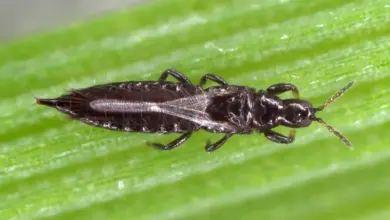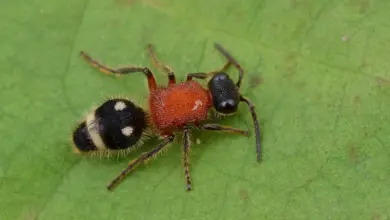Bed bugs are small, yet persistent creatures that often infest our homes, causing discomfort and annoyance. A question that might cross your mind is, what do bed bugs eat? Well, these tiny insects primarily feast on the blood of their hosts. Since they sneakily bite and feed on humans at night, it’s important to recognize their presence and learn how to prevent them from thriving in your living environment.
Blood-sucking insects like bed bugs don’t transmit diseases, but their bites can be unpleasant. You might experience cutaneous reactions, which start as small lesions but can develop into larger itchy welts. Apart from humans, bed bugs may also feed on chickens, other fowl, and mammals when the opportunity arises. Therefore, it is crucial to understand their biology and habits to effectively manage them.
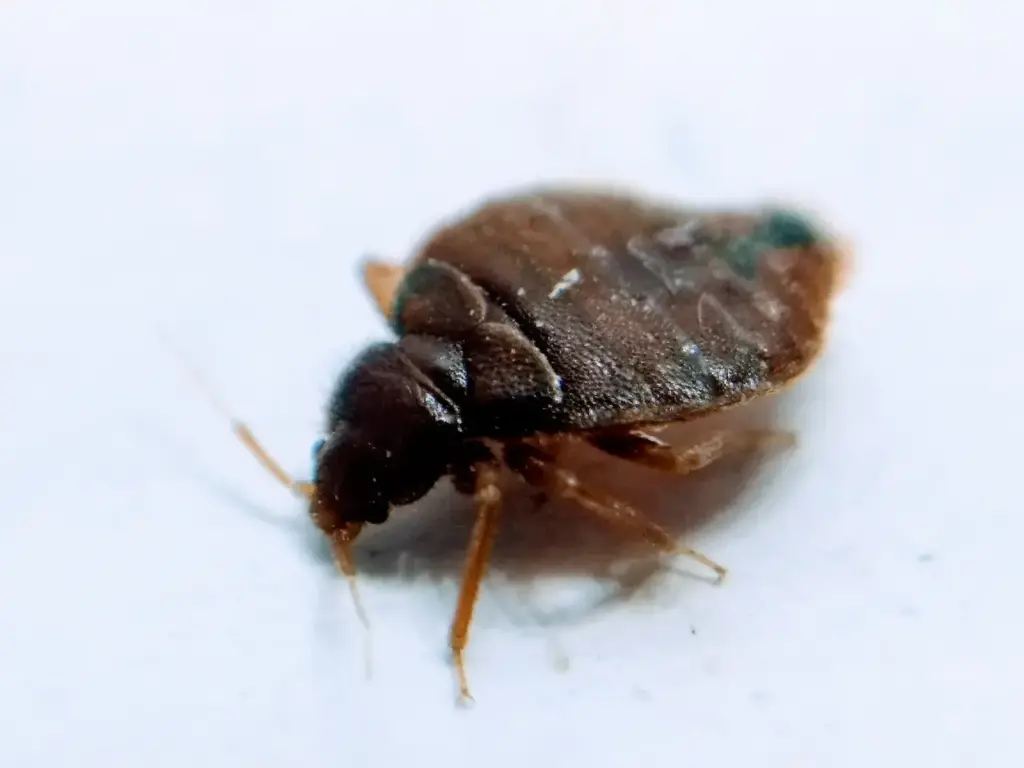
Now that you know bed bugs primarily feed on blood, exploring their habitats and possible prevention methods can help you avoid unwanted encounters with these pests. Remember, knowledge is your best weapon in keeping these tiny bloodsuckers at bay.
What Do Bed Bugs Eat
Bed bugs are small, flat, parasitic insects known to feed on blood. They primarily feed on humans, but they can also consume the blood of other warm-blooded animals, such as mammals and pets.
For example:
- Human blood: Bed bugs often infest homes, hotels, and public spaces where humans sleep or rest, taking advantage of easy access to their primary food source.
- Mammals: Although less common, bed bugs might feed on the blood of mammals like cats, dogs, and rodents if they encounter them.
Bed bugs have specially adapted mouthparts to pierce the skin and extract blood from their hosts. While they prefer to feed at night, these pests can also be active during the day in search of a meal.
Here are some key points about bed bug feeding habits:
- Frequency: Bed bugs usually feed every few days but can survive for several months without a meal.
- Duration: A bed bug’s feeding time lasts around 5-10 minutes before they retreat to their hiding spot.
- Health impact: Bed bug bites can cause itchy, red welts, but they typically do not transmit diseases.
So remember, bed bugs are attracted to warm-blooded animals, with a strong preference for human blood. By understanding their feeding habits, you can better prepare to protect yourself and your home from these unwelcome pests.
Lifecycle of Bed Bugs
Bed bugs go through several stages in their life, starting from eggs and developing into nymphs and eventually adults. The entire lifecycle of bed bugs consists of the following stages:
- Eggs (1mm)
- 1st stage nymph (1.5 mm)
- 2nd stage nymph (2 mm)
- 3rd stage nymph (2.5 mm)
- 4th stage nymph (3 mm)
- 5th stage nymph (4.5 mm)
- Unfed adult female and male
Female bed bugs can lay up to 500 eggs in their lifetime, usually in clusters. These eggs then hatch into nymphs within a week or two.
Nymphs go through a process called molting, where they shed their exoskeletons to grow. They molt five times before becoming adults. At each stage, they need to feed on blood to continue developing.
During their development, bed bugs are known to be resilient creatures. They can survive several months without a blood meal, making them one of the more difficult pests to eradicate from your home.
Knowing this information about the lifecycle of bed bugs can help you in identifying and managing their presence in your living space.
Where Bed Bugs Live
Bed bugs are pesky insects that can cause discomfort and distress in your home. They have a knack for making themselves at home in various parts of your living space, with a preference for areas where humans and animals sleep.
One of the most common places for bed bugs to live is in your mattress. They love to hide in the ribbing of a mattress corner, as well as in the seams and tags of both the mattress and box spring. These insects can also be found in cracks on the bed frame and headboard, making beds a perfect environment for them to thrive.
Aside from beds, bed bugs also like to reside in other types of furniture. They can be found in the seams of chairs and couches, between cushions, and even in the folds of curtains. Upholstered furniture and carpets provide additional hiding spots for these persistent parasites.
Creatures of habit, bed bugs tend to congregate in areas where they can feed on humans or animals, which is why they usually target bedrooms or other resting places. When a bed bug infestation becomes more severe, they may spread out to other areas of your home. This includes hiding in crevices or cracks found in walls, baseboards, and even electrical outlets.
In summary, bed bugs can be found in:
- Mattresses and box springs
- Bed frames and headboards
- Upholstered furniture
- Carpets
- Cracks and crevices in walls or floors
Keep an eye out for signs of bed bugs in these areas to prevent infestations or catch them early. By doing so, you can maintain a comfortable living environment free of these unwelcome guests.
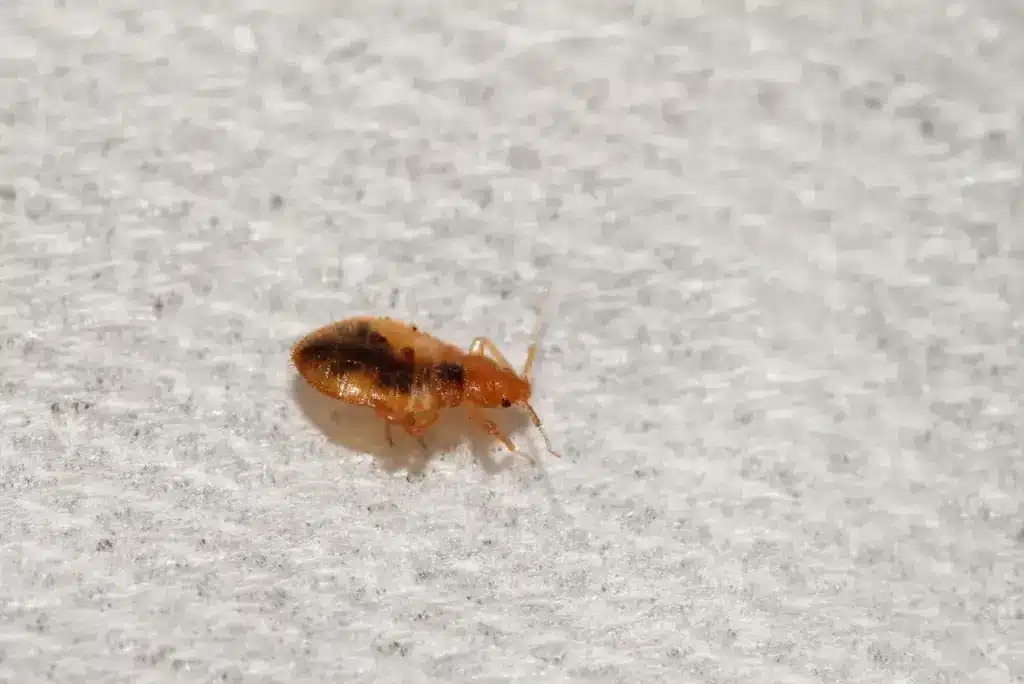
How Bed Bugs Travel
Travel and Infestation
Bed bugs are experts at hitchhiking and infesting various places. They can easily spread through luggage, clothing, and furniture. When you travel, it’s essential to be aware of the various ways bed bugs can sneak into your belongings and follow you home.
Hotels: Bed bugs often reside in the seams and folds of mattresses, box springs, and headboards. They can also hide in the folds of curtains and drawer joints1. When staying in a hotel, it’s crucial to inspect bedding and furniture for signs of bed bugs to avoid carrying them home in your luggage.
Trains and Buses: Public transportation, like trains and buses, provides an excellent opportunity for bed bugs to transfer between passengers’ bags and belongings. Be mindful of where you place your luggage and look out for signs of bed bugs in seats and storage compartments.
Cruise Ships: Just like hotels and public transportation, cruise ships can also harbor bed bugs, since they accommodate a large number of passengers in close quarters. To avoid bringing bed bugs home in your luggage, inspect your cabin thoroughly and store your belongings carefully.
In addition to these common travel locations, bed bugs are known to inhabit other places like wallpaper seams and furniture. To minimize the risk of infestation, take these precautions:
- Always inspect your hotel room, train seat, or any other accommodation for signs of bed bugs before settling in.
- When packing your luggage, consider using sealed plastic bags to keep bed bugs out.
- Upon returning home, wash your travel clothes in hot water and dry them at the highest temperature setting.
Remember, prevention is key in the fight against bed bugs. By staying vigilant and taking these measures during your travels, you can better protect your home from these unwelcome pests.
Identifying a Bed Bug Infestation
Bed bug infestations can be quite a nuisance, so it’s essential to detect them early. To identify an infestation, keep an eye out for these signs:
- Bites: Bed bug bites are often the first indication of their presence. They look like small, red, itchy bumps on your skin.
- Size: Adult bed bugs are about the size of an apple seed, while the nymphs (young bed bugs) are smaller, making them difficult to spot.
- Color: Bed bugs are reddish-brown in color, making them easier to see against lighter backgrounds.
To confirm if those red bites are from bed bugs, you need to look for other signs:
- Bedding & Mattresses: Check your sheets, pillowcases, and mattress seams for tiny dark spots, which could be bed bug excrement or blood stains.
- Furniture: Bed bugs can also hide in upholstery, furniture joints, and drawers. Look for live bugs, shed skins, or eggs in these areas.
If you notice any of these tell-tale signs, take immediate action to control the infestation. Start by capturing any bed bugs you find and sealing them in a plastic bag. This will help pest management in their assessment and treatment plan.
Effects of Bed Bug Bites
Bed bug bites can cause various health issues, ranging from mild to severe. Here are some common effects:
Itching and Rashes: One of the most common reactions to bed bug bites is itching. You might also experience red, swollen areas around the bite site or even develop a rash.
Blisters and Hives: In some cases, bed bug bites can lead to the formation of blisters or hives, especially if you have an allergic reaction to the bites.
Bed bug bites can also impact your mental and emotional well-being. For example:
Anxiety: Dealing with bed bugs can be extremely stressful, leading to increased anxiety. This might be because you’re constantly worried about getting bitten or struggling to get a good night’s sleep.
Remember to consult a healthcare professional if you’re experiencing severe reactions or if your symptoms persist. They can provide the appropriate treatment and guidance to help you cope with bed bug bites.
Bed Bugs and Disease
Bed bugs are small, flat, parasitic insects that feed solely on the blood of people and animals while they sleep. Despite their unnerving presence, the good news is that bed bugs do not transmit diseases. This sets them apart from other blood-feeding insects, such as mosquitoes and ticks, which are known vectors of various diseases.
The primary concern with bed bugs is their bite. While some people may not experience any symptoms, others can develop an allergic reaction or skin irritation. It’s essential to properly clean and disinfect the affected area to prevent secondary infections from scratching.
In conclusion, while bed bugs are a nuisance and can cause discomfort, they are not considered a significant threat to public health due to their inability to transmit diseases.
Professional Extermination and Prevention
You might be concerned about bed bugs, and it’s essential to ensure a healthy and comfortable living environment. Let’s discuss professional extermination and prevention methods.
Professional Pest Control
Hiring a professional exterminator is a reliable way to address bed bug infestations. They have the expertise and equipment to effectively eliminate these pests. Here are some pros and cons of professional extermination:
Pros:
- Efficient and thorough removal of bed bugs
- Use of specialized equipment and chemicals
- Expertise in targeting infestation sites
Cons:
- Can be expensive
- May require multiple visits
- Disruption to your home during treatment
Prevention Strategies
To prevent future infestations, follow these simple tips:
- Regularly inspect your home for signs of bed bugs, paying close attention to areas around beds and furniture
- Wash and dry clothes at high temperatures after traveling, as bed bugs can hitch a ride on clothing
- Avoid bringing used furniture into your home without thoroughly inspecting and cleaning it first
Reducing Clutter
Another essential step in prevention is reducing clutter in your home. Clutter provides hiding places for bed bugs, making it more challenging for you or professionals to detect and control them. So, take some time to organize your belongings and minimize clutter.
Protecting Items
Finally, you can protect your clothes and other objects by using sealed plastic containers or bags. This will prevent bed bugs from infesting your items and reduce the risk of spreading an infestation.
Now that you know more about professional extermination and prevention methods, take the necessary steps to keep your home bed bug-free.
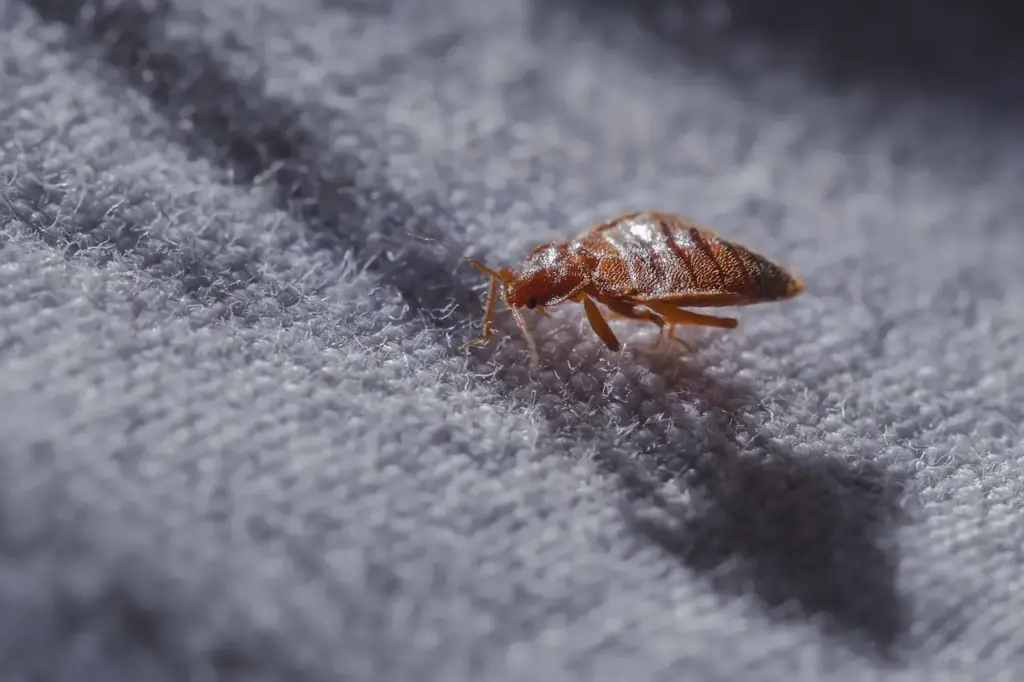
The Cost of Bed Bug Infestations
Bed bugs are notorious for causing issues in households and public places, and dealing with these pests can be costly. In this section, we will discuss the monetary impact of bed bug infestations.
Bed bugs feed on the blood of humans and animals, typically hiding in dark, undisturbed locations close to their hosts. The presence of these insects can cause irritation, itching, and discomfort, making it difficult to feel at ease in your own home.
To combat bed bug infestations, extermination efforts are often necessary. The cost of hiring a professional exterminator can vary, ranging from a few hundred to a few thousand dollars, depending on the severity of the infestation and the size of your living space.
If you decide to tackle the problem yourself, there are numerous products available that claim to help eliminate bed bugs. These items can range in price, and some may be more effective than others.
- Pesticides approved for bed bug control
- Bed bug traps
- Mattress covers
- Portable heaters
Keep in mind that treating an infestation is not a one-time event. You may need to repeat this process multiple times, which can increase the overall cost. Additionally, while waiting for successful treatment, psychological and health-related costs can also accumulate, such as anxiety, sleep disturbances, and social stigma associated with having bed bugs.
Though the costs associated with bed bug infestations can be intimidating, it is essential to act quickly to minimize the impacts on your well-being and wallet. Early detection and treatment can help prevent the issue from escalating.
Conclusion
In summary, bed bugs are small, parasitic insects that feed solely on the blood of people and animals while they sleep (source). They do not transmit diseases but can cause allergic reactions and mental health issues, such as anxiety and insomnia (source).
Bed bugs are resilient creatures that can live several months without a blood meal and are expert hitchhikers, moving from infested sites to furniture, bedding, baggage, boxes, and clothing (source). Basic precautions, like checking for signs of infestations and regular cleaning, can help prevent their spread.
For more information on bed bug prevention, detection, and control, consider reviewing the EPA’s recommendations. As you learn more about bed bugs, you’ll be better equipped to protect yourself and your loved ones from these unwelcome guests.


